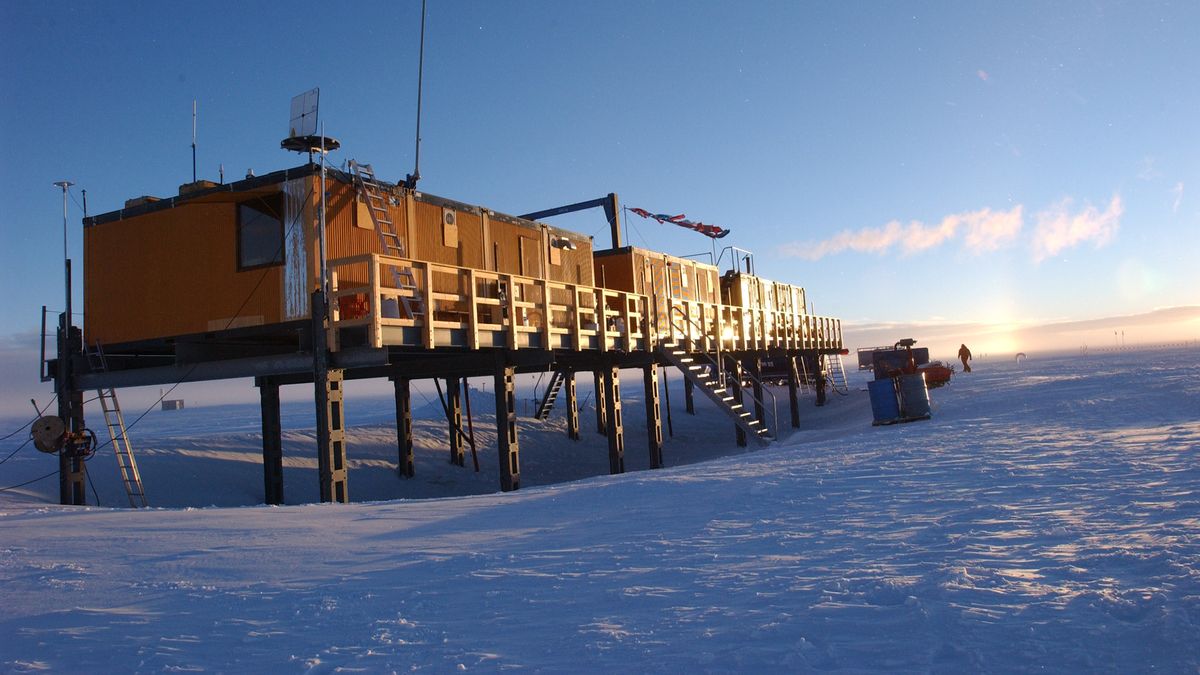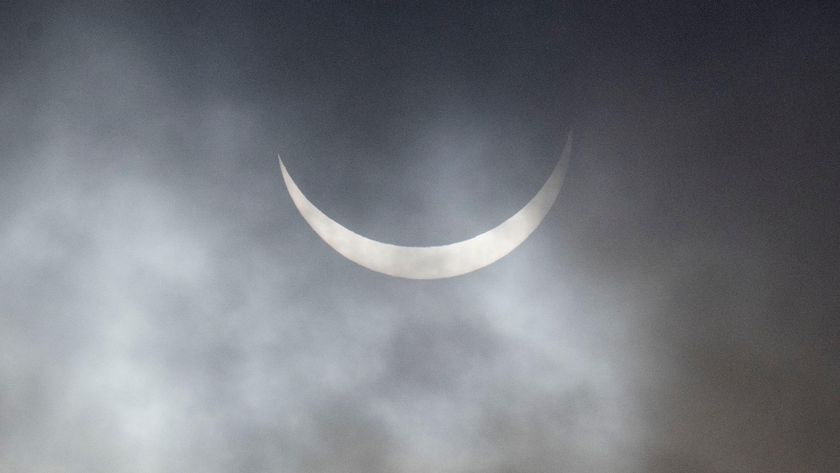Space Dust from Ancient Supernova Found Hiding in Antarctica
Iron traces in snowfall originated in a stellar explosion millions of years ago.

Cosmic dust found in Antarctic snow was likely birthed in a distant supernova millions of years ago. The dust's interstellar journey eventually brought the material to Earth, where scientists discovered the ancient grains.
This dust stood out because it contains an iron isotope called iron-60, which is commonly released by supernovas but very rare on Earth. (Isotopes are versions of elements that differ in the numbers of neutrons in their atoms.)
In the search for elusive space dust, scientists analyzed more than 1,100 lbs. (500 kilograms) of surface snow that they gathered from a high-altitude region of Antarctica near the German Kohnen Station. In that location, the snow would be mostly free of contamination from terrestrial dust, the researchers reported in a new study.
The investigators then sent the still-frozen snow to a lab in Munich, where it was melted and filtered to isolate dust particles that could contain traces of material from space. When the scientists examined the incinerated dust using an accelerator mass spectrometer, they detected the rare iron-60 isotope — a relic of an ancient supernova.
Related: 15 Amazing Images of Stars
Space is a dusty place, rich with particles expelled by supernovas and shed from planets, asteroids and comets. Our solar system is currently passing through a large cloud of space dust known as the Local Interstellar Cloud (LIC), and grains from this cloud found on Earth could reveal much about how our sun and its planets interact with cosmic dust.
To find out if the space dust came from a distant supernova, the scientists first had to rule out whether it originated within our solar system. Irradiated dust shed by planets and other bodies can hold iron-60, but exposure to cosmic radiation also creates another isotope: manganese-53. The researchers compared ratios of iron-60 and manganese-53 in the Antarctic grains, finding that the quantity of manganese was much lower than it would have been if the dust were local.
Sign up for the Live Science daily newsletter now
Get the world’s most fascinating discoveries delivered straight to your inbox.
How did the scientists know that the iron-60 in the Antarctic snow didn't originate on Earth? There may have been iron-60 on our planet during its infancy, but all of this rare isotope has long since decayed on Earth, the researchers wrote in the study. Nuclear bomb tests could have created and dispersed iron-60 across the planet, but calculations showed that the quantity of the isotope produced by such tests would have been much lower than the amount of iron-60 found in Antarctica's snow.
Iron-60 is also produced in nuclear reactors; however, the amount of the isotope that reactors generate is "insignificant" and is confined to the reactors where it is made, the scientists said. To date, even serious nuclear accidents, such as the Fukushima Daiichi nuclear power plant disaster in 2011, didn't introduce iron-60 to the environment in measurable quantities, according to the study.
Previously, iron-60 on Earth has been found only in ancient deep-sea deposits or in rocks that originated in space, "like meteorites or on the moon," the scientists reported online Aug. 12 in the journal Physical Review Letters.
"By ruling out terrestrial and cosmogenic sources [shaped by cosmic rays], we conclude that we have found, for the first time, recent iron-60 with interstellar origin in Antarctica," the researchers wrote.
- The 10 Greatest Explosions Ever
- Spaced Out! 101 Astronomy Photos That Will Blow Your Mind
- The 12 Strangest Objects in the Universe
Originally published on Live Science.

Mindy Weisberger is an editor at Scholastic and a former Live Science channel editor and senior writer. She has reported on general science, covering climate change, paleontology, biology and space. Mindy studied film at Columbia University; prior to Live Science she produced, wrote and directed media for the American Museum of Natural History in New York City. Her videos about dinosaurs, astrophysics, biodiversity and evolution appear in museums and science centers worldwide, earning awards such as the CINE Golden Eagle and the Communicator Award of Excellence. Her writing has also appeared in Scientific American, The Washington Post and How It Works Magazine. Her book "Rise of the Zombie Bugs: The Surprising Science of Parasitic Mind Control" will be published in spring 2025 by Johns Hopkins University Press.










